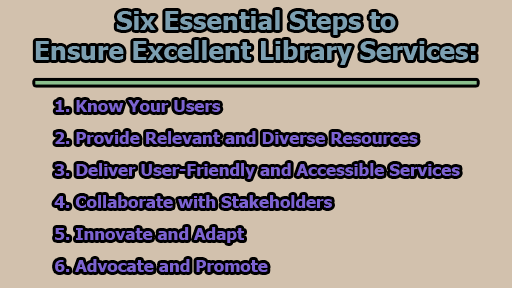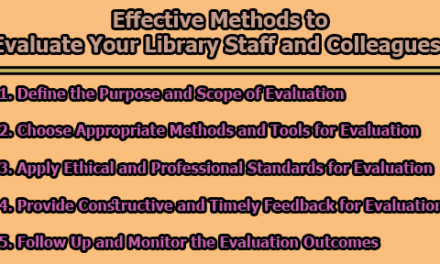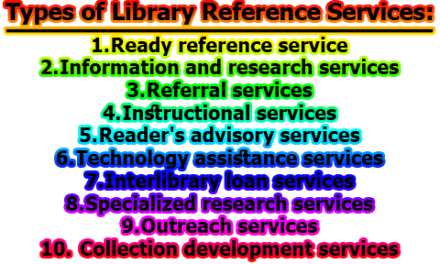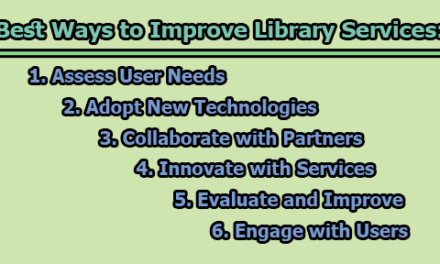Six Essential Steps to Ensure Excellent Library Services:
Library services play a pivotal role in supporting learning, research, and community engagement across various settings, including public, academic, school, and special libraries. To provide excellent library services that meet the diverse needs and expectations of users, librarians must adopt a user-centric approach and consider the specific context in which they operate. In this article, we explore six essential steps to ensure excellent library services, offering a guide for librarians and library professionals.
1. Know Your Users: The foundation of excellent library services lies in understanding your users. To achieve this, libraries can employ a variety of methods, including surveys, interviews, focus groups, observation, and analytics. Creating user personas, profiles, or segments can help in comprehending users’ characteristics, goals, challenges, and preferences. This knowledge enables libraries to tailor their services to meet the specific needs and interests of their patrons, ensuring a personalized and effective library experience.
2. Provide Relevant and Diverse Resources: An excellent library service requires a well-curated collection of resources that support the information needs and goals of users. Developing clear collection development policies, guidelines, and criteria for resource selection, acquisition, evaluation, and weeding is crucial. It’s equally important to ensure that resources are diverse, inclusive, accurate, and up to date. Promotion through displays, newsletters, social media, and outreach activities enhances visibility and accessibility.
3. Deliver User-Friendly and Accessible Services: Libraries must offer user-friendly and accessible services to help users find, use, and share information effectively and efficiently. Applying service design principles, tools, and techniques ensures services are designed from a user perspective. Accessibility for all users, regardless of their abilities, backgrounds, or devices, should be a priority. User education and support through various channels and formats further enhance the overall user experience.
4. Collaborate with Stakeholders: Collaboration is essential for enhancing library services. Identifying and engaging with potential partners, such as other libraries, organizations, institutions, or community groups, can expand the library’s reach and improve services. Effective communication and coordination with colleagues, managers, and staff help align library services with the institution’s goals and strategies. Involving users in co-creating, co-designing, or co-evaluating services fosters a sense of ownership and promotes relevance.
5. Innovate and Adapt: Innovation is key to staying relevant and meeting evolving user needs. Librarians should embrace innovation frameworks, methods, and tools to generate, test, and implement new ideas and approaches. Evidence-based practice, research, and evaluation help measure the impact and value of library services. Libraries should be open to change, learn from failures, and continuously seek improvement to adapt to changing user expectations and technological advancements.
6. Advocate and Promote: Advocacy and promotion are critical for showcasing the value of library services. Effective advocacy strategies, tactics, and messages raise awareness and influence key stakeholders. Using a variety of promotion techniques, channels, and materials can highlight the library’s achievements and contributions. Demonstrating the library’s role in the success and well-being of users and the community as a whole reinforces the importance of the services provided.
In conclusion, providing excellent library services is a multifaceted task that requires a deep understanding of users, relevant resources, user-friendly services, collaboration, innovation, and advocacy. In the end, it’s crucial to remember that each interaction with a library user should be treated with the utmost care and attention, reflecting the basic principle of treating others as you would want to be treated. By following these six steps and keeping the user at the center of every decision, libraries can deliver exceptional services that make a significant impact on learning, research, and community engagement in any context.

Library Lecturer at Nurul Amin Degree College










